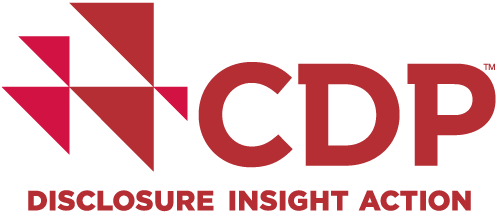For companies, 2020 has been a stunning reminder of the
importance of resilience-building and mitigating and adapting to potential
economic shocks.
COVID-19 has shown how unseen externalities can drastically affect our global economy. The connection to the natural environment is clear: ecosystem
destruction leads to virus spillover and more frequent pandemics; production
halts due to economic shutdown put a strain on global supply chains.
We are more aware than ever before of the interlinked impacts of climate change, deforestation and water insecurity. A warming climate both increases the risk of droughts and the chance of forest fires. Deforestation both increases global warming and reduces the quantity and quality of water supply. Thorough transparency and management of all three is critically important.
In this spirit, we have assessed the environmental risks facing major North American companies, based on their 2019 corporate disclosures. The key findings illustrate a growing awareness of risks among companies – and, worryingly, some undiscovered risks that have not yet been addressed.
88% of companies assess climate-related risks.
It is encouraging to see North American companies have
largely evaluated climate risks. Extreme weather events caused or exacerbated
by climate change are increasingly threatening company production centers, and many
business models will need to transform to succeed in a low-carbon economy. We
should see this number approach 100% in the near future.
87% of companies undertake some type of water-related risk
assessment.
As the Colorado River approaches dangerous record-level
depletion and water pollution and floods along the Mississippi threaten
communities and economies in the South and Midwest, companies must consider water-related risks as they plan for the future.
73% of companies assess deforestation risks.
Companies are paying less attention to deforestation risk
than they are to climate change and water security. As more forests are cleared
for global commodity production, American and Canadian companies will
inevitably face increasing risks to their business.
STATE OF PLAY: RISK ASSESSMENT PRACTICES

Less than half of the 64 companies (48%) that responded to
investor requests on all three of CDP’s thematic questionnaires assessed risks
for climate change, water security and deforestation.
Most companies (56.1%) assess water-related risks from direct operations annually. However, more than one third of companies do not assess water-related supply chain risks.
Failure to act on risks in the value chain comes at a hefty price. Globally, suppliers report a potential loss of US$1 trillion due to environmental risks. Corporations downstream of these supply chains could face resulting costs due to disruption, reputational damage and regulatory changes. Companies must assess supply chain risks in addition to their direct operations risks, and act to mitigate those risks quickly.
Three quarters of companies identify climate-related risks with the potential to financially or strategically impact business.
While a significantly higher proportion of companies reported
climate-related risks than water or forests risks, it is still surprising that
a quarter do not identify substantive climate-related risks. A 2018 U.S. government
report predicted that if significant climate change mitigation doesn’t occur,
the damage will
reduce
the American economy by up to 10 percent by century's end. All companies have a mitigation role to play to prevent such an economic impact. Understanding the risks behind that prediction, and their applicability to a certain business activity or company, is an important step in the process.
Less than half of companies (44.8%) do not identify any water-related risks to their direct operations, value chain or both.
It is worrisome that not even half of North American
companies are identifying water-related risks, considering we face a
56%
shortfall of the available global water supply by 2030,
according to WRI. Our entire global economy is vulnerable to the increasing incidents of floods, droughts and pollution, among other water-related risks.
Risk types vary across climate change, water and forests
disclosure.
Flooding and the risk of increased concern of negative feedback from stakeholders are common concerns across climate change and water security. Generally, there is more concern with physical risks in water security disclosure, while top climate change risks include market, policy and legal issues. Deforestation risks are largely seen as reputational, not physical.
Our research revealed widespread differences as well as
common trends among the most commonly reported risks by North American
companies:

The current state of play in risk assessment by North
American companies points to latent risk in the U.S. and Canada. While many
companies have identified risks from their environmental assessments, the
numbers show there is likely a wide range of undisclosed potential impacts.
North America companies know that disclosure is an essential
force for good and an invaluable tool for managing risk. Yet, surprisingly, in
2019 more than 100 of these companies told CDP that they did identify potential
impacts that were not disclosed because they were not substantive to the
finances or strategy of the business.
While in isolation these risks may not be deemed by companies to be material for an investor, taken in aggregate they may amount to significant potential impacts. For citizens with a stake in the market as a whole and the planet we live on, these aggregated risks may in fact be highly material.
We need to see more thorough risk assessment and disclosure
on both the company level as well as in North America overall to truly
understand the threats posed by climate change and environmental destruction.

